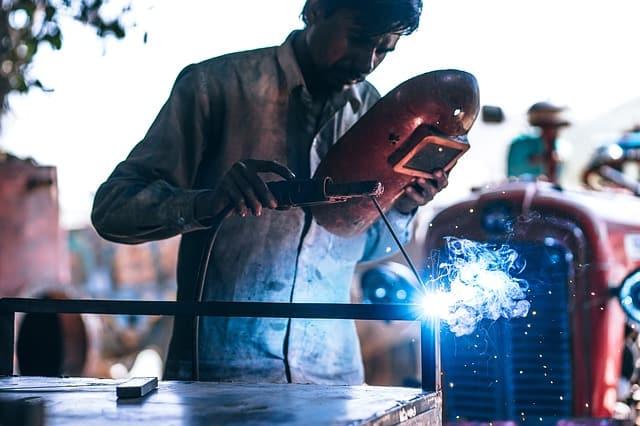How to Use a Stick Welder? – [7 Things to Know]
Stick welding is one of the popular welding processes.
However, for many people, especially those who are new to welding, stick welding, it’s one of the more difficult welding processes.
Gladly, for the experienced welders who have mastered the art of arc welding, they can create an awe-inspiring weld.
While you may struggle to get the hang of arc welding, it doesn’t need to be strenuous if you pay attention to our tips on how to use a stick welder.
In the article below, we shall properly address the basic overview of the arc welding and see to use a stick welder properly.
Table of Contents
How to Arc Weld?

Read more: Best Multi-Process Welders
1. Prepare
Stick welding is quite forgiving even on dirty and rusty metals. But don’t use this as an excuse for not cleaning the metal thoroughly.
A clean metal surface will improve your chances of creating a good weld.
A dirty environment, on the other hand, can result in a myriad of issues such as cracking, porosity, and lack of fusion/inclusion.
So, take on some wire brushes and give the surface a thorough clean.
2. Managing your Stick Weld Settings
There’s a learning curve with stick welding, which everyone must learn.
But don't get discouraged, we are going to show you how to undertake the entire stick welding process.
3. Electrode/Amperage Setting
Your choice of electrode depends on the polarity of your machine.
The amperage settings, on the other hand, will depend on the diameter, as well as the type of electrode you're going to use.
The rule of thumb when selecting and an electrode is that 1 amp should correspond to .001-inch of electrode diameter.
You’ll need, however, to adjust the amperage of your welder until the ideal setting is reached.
If your amperage is too low, you might experience a stick electrode, which is quite evident, especially when striking an arc.
If your amperage is too high, your electrode is likely to get charred, and the arc sound will get loud and noisy. This is not to mention too much heat can negatively affect the electrode’s flux properties.
4. Length of the Arc
There’s no standard length of the arc. The correct length will depend on the electrode and application.
A good starting point to the ideal arc length is that it should not be more than the diameter of the metal core of the electrode.
For instance, a 1/8-inch electrode should be held approximately 1/8 inch off the base material.
Sure, a long arc will offer a clear view of the arc and puddle. However, the long arc generates spatter, low deposition rates, porosity, and undercuts.
If you've had trouble seeing the arc and puddle, you can start by finding a good body position. A comfortable position will not only offer a clear view of the puddle, but it will provide better control of the process.
With a little practice, a tight and controlled arc length will drastically improve on the aesthetics of the bead, create a narrower bead, and minimize spatter.
5. Angle of Travel
The angle of travel will depend on the stick welding technique you’re using.
For instance, drag or backhand welding techniques are suitable if you’re stick welding in a flat or horizontal position.
The push or forehand technique, on the other hand, is suitable if you're stick welding vertical up.
6. Manipulation of Electrode
There’s no right way of stick welding.
Mastering the art of stick welding requires that you develop an individual style. Whether it's by observing what others do, practicing, or both, you'll need to develop a style that will produce the best results.
Here’re a few pointers to guide you;
- 1On thinner materials (less than ¼ inch) weaving the electrode is not needed. Instead a straight bead is all that is needed
- 2To create a wider bead on thicker materials, move the electrode sideways
- 3To cover a wider area, make multiple passes or use stringer bead
- 4When welding vertical up, the focus of the side
7. Speed of Travel
Faster travel decreases penetration, create undercuts, and creates narrower crowned beads.
Slower travel, on the other hand, produces a wide and convex bead.
Aim for moderate speed and always keep the arc in the leading 1/3 of the weld pool.
Also read: Best MIG Welders Under $1000
Conclusion
Stick welding should not be challenging anymore.
By following these tips, you should be in the right track to learning and developing your stick welding technique for the best results.
Related: How to Use a MIG Welder?

![How to Use a Stick Welder? – [7 Things to Know] How to Use a Stick Welder](https://powertoolsgeek.com/wp-content/uploads/2019/09/How-to-Use-a-Stick-Welder.jpg)